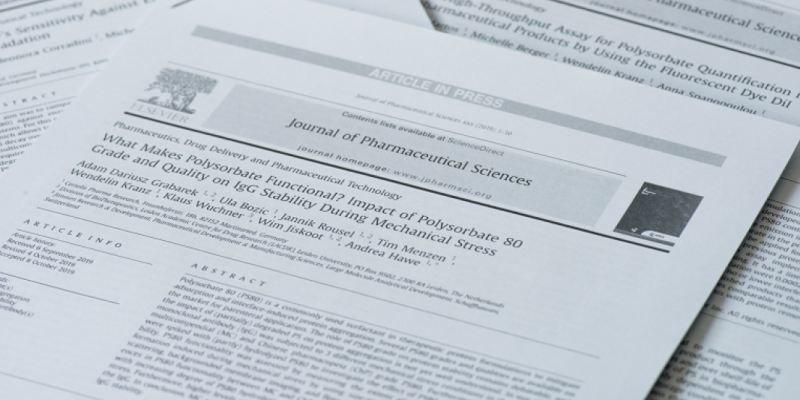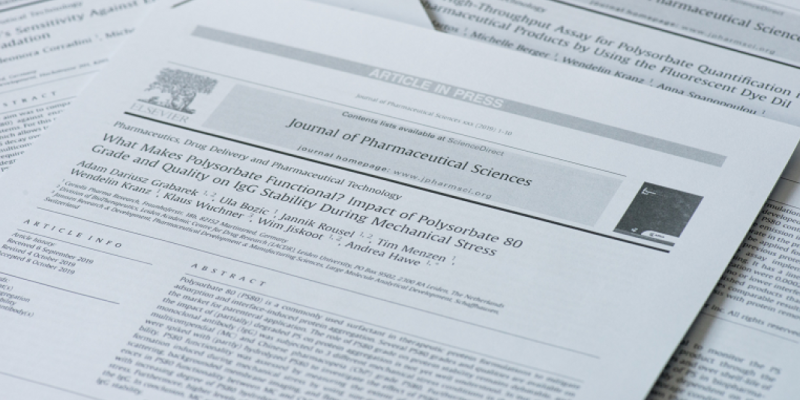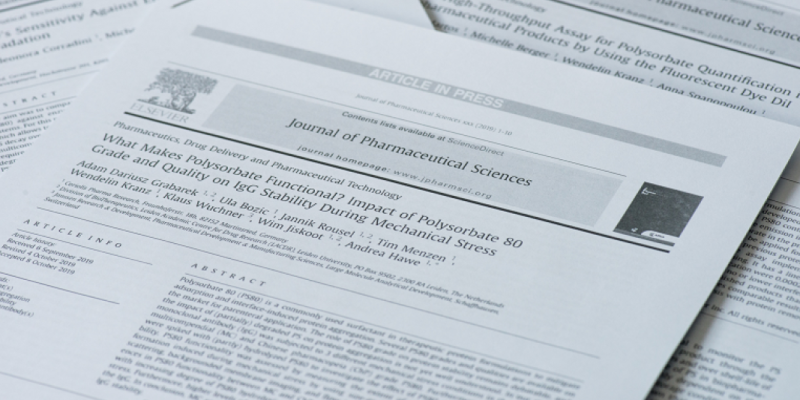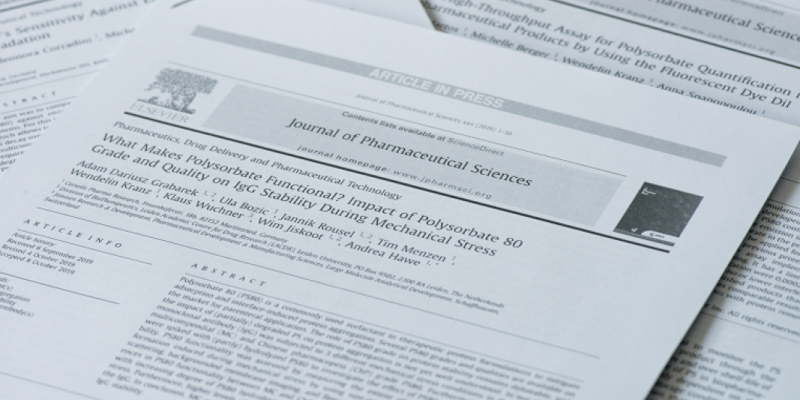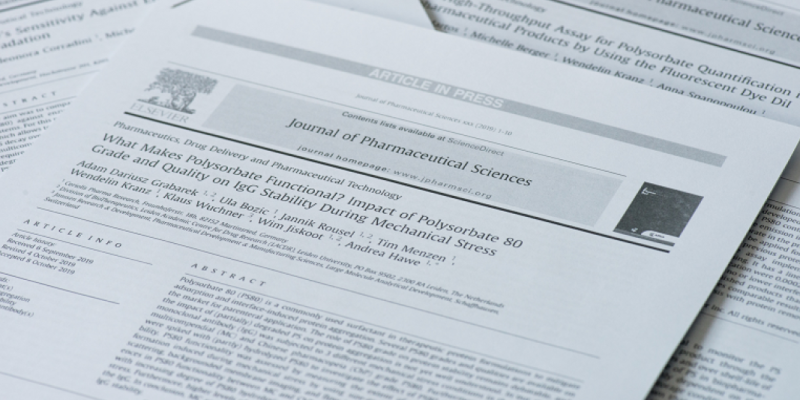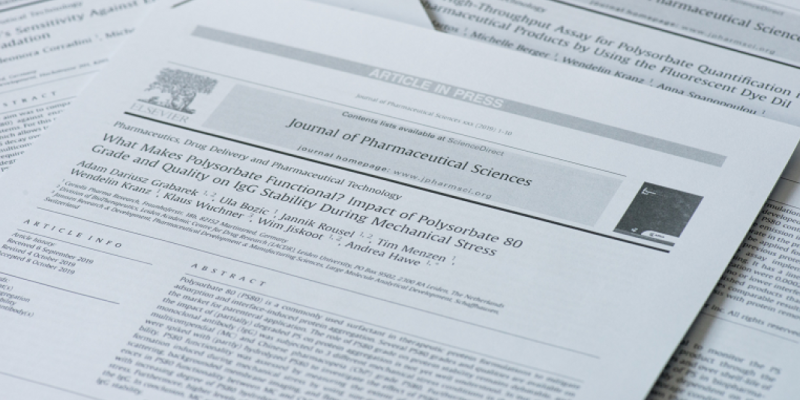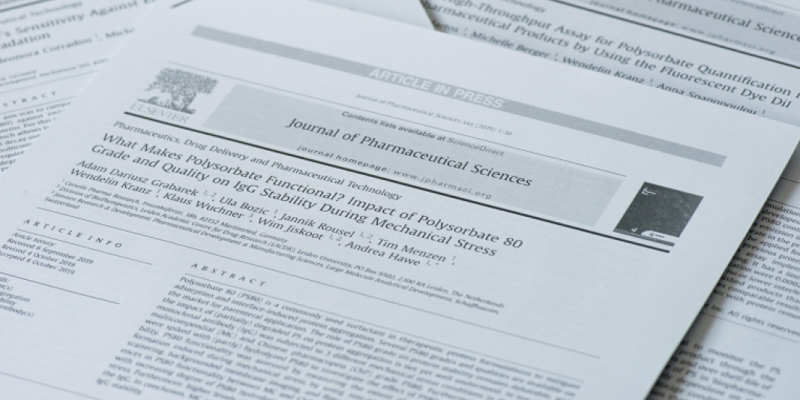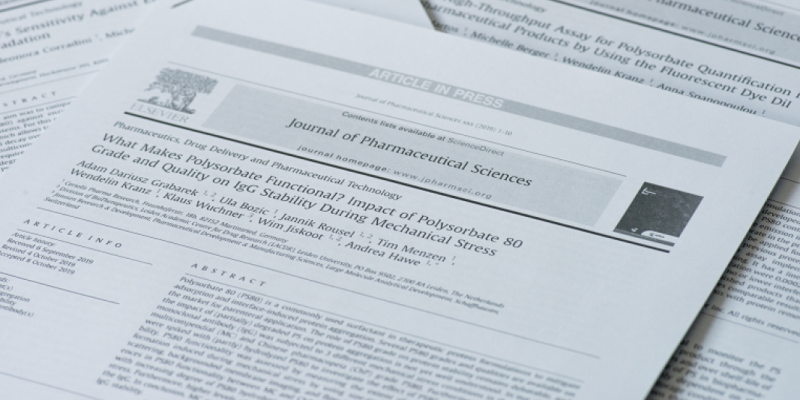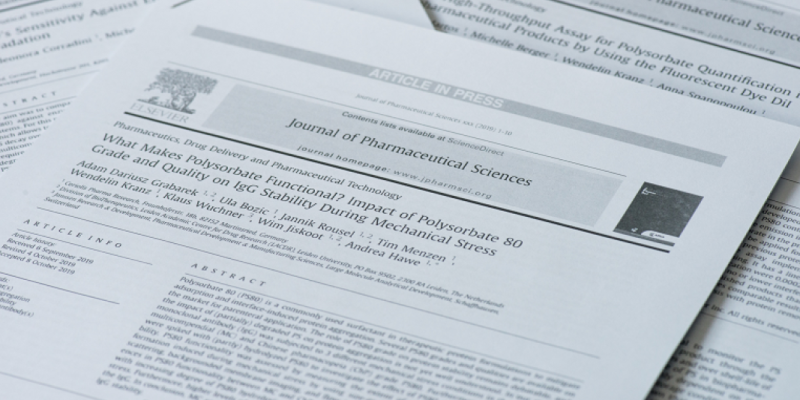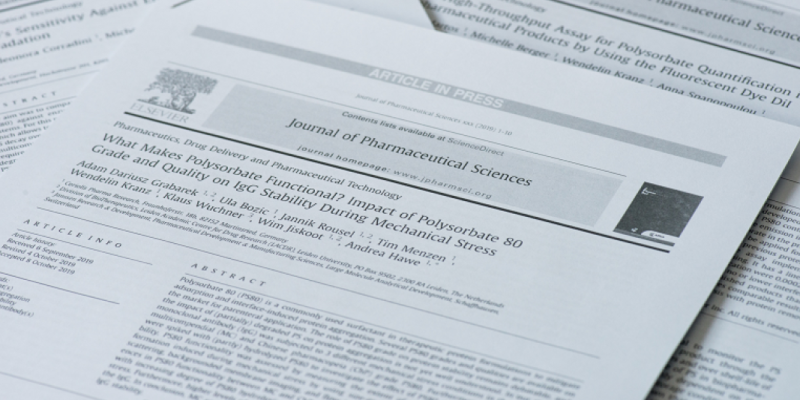No Touching! Abrasion of Adsorbed Protein Is the Root Cause of Subvisible Particle Formation During Stirring.
J Pharm Sci. 2016 FEB
This study addressed the effect of contact sliding during stirring of a monoclonal antibody solution on protein aggregation, in particular, in the nanometer and micrometer size range. An overhead stirring set-up was designed in which the presence and magnitude of the contact between the stir bar and the container could be manipulated. A solution of 0.1 mg/mL of a monoclonal antibody (IgG) in phosphate buffered saline was stirred at 300 rpm at room temperature. At different time points, samples were taken and analyzed by nanoparticle tracking analysis, flow imaging microscopy, and size-exclusion chromatography. In contrast to non-contact-stirred and unstirred samples, the contact-stirred sample contained several-fold more particles and showed a significant loss of monomer. No increase in oligomer content was detected. The number of particles formed was proportional to the contact area and the magnitude of the normal pressure between the stir bar and the glass container. Extrinsic 9-(2,2-dicyanovinyl) julolidine fluorescence indicated a conformational change for contact-stirred protein samples. Presence of polysorbate 20 inhibited the formation of micron-sized aggregates. We suggest a model in which abrasion of the potentially destabilized, adsorbed protein leads to aggregation and renewal of the surface for adsorption of a fresh protein layer.
J Pharm Sci. 2016 FEB
https://jpharmsci.org/article/S0022-3549(15)00004-0/fulltext

